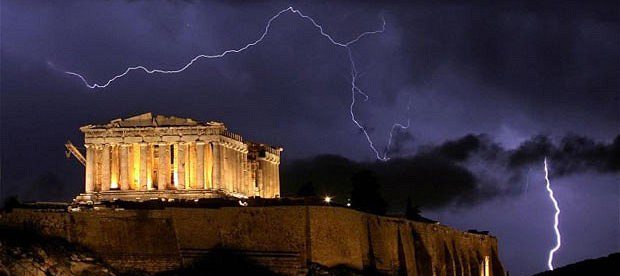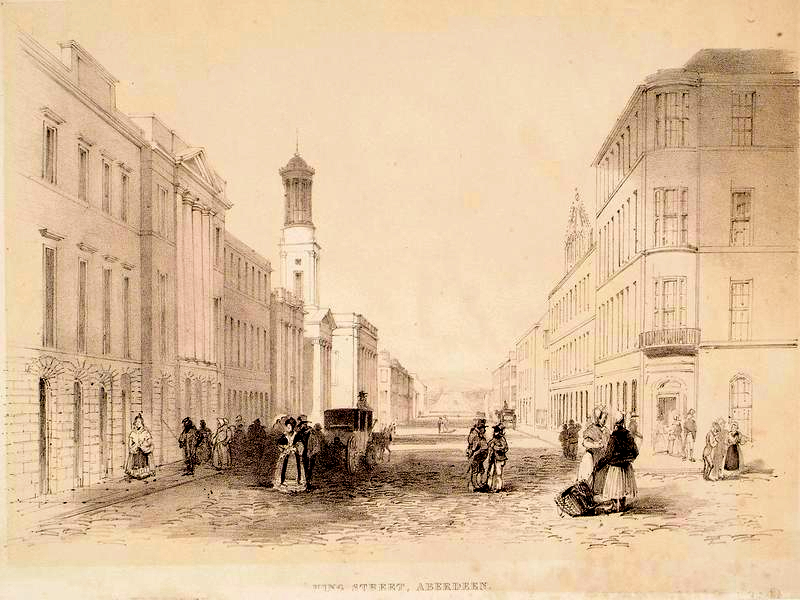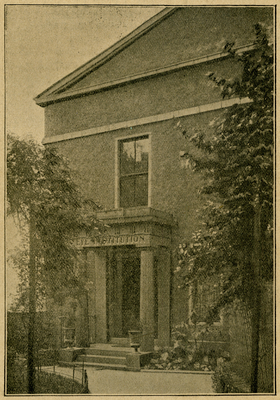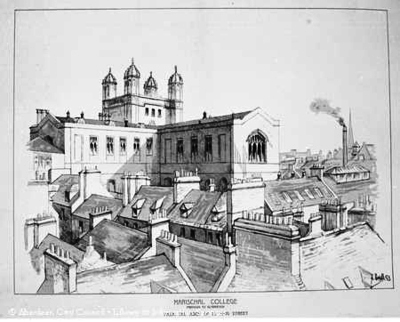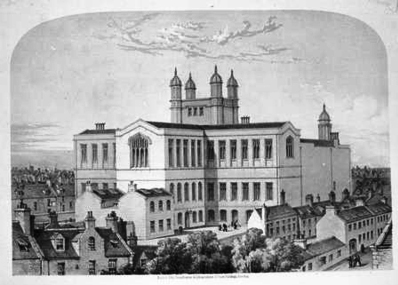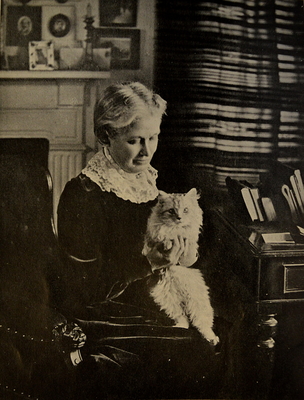King Street ~ Built 1801-04
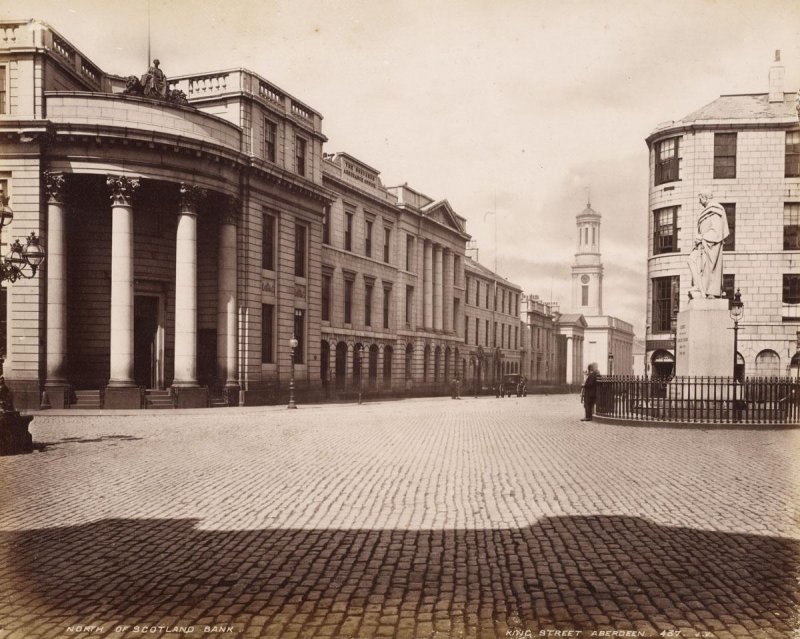
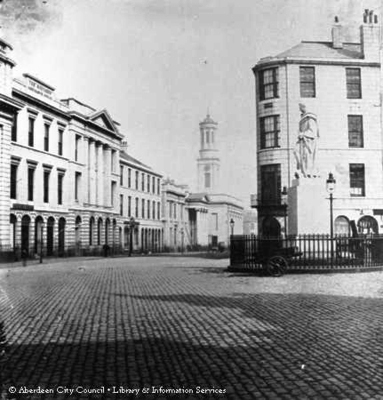
From Castle Street to Love Lane AB24 5AX
King Street c.1890 showing Archibald Simpson’s North of Scotland Bank Entrance, Britannic Assurance Office No.3 and the Pediment of the Commercial Bank of Scotland No.s 7-9. The City Records Office No.27 was to the left of the Medico Building Portico No.29. Gone are the 2–Russian Cannon Trophies from Sevastopol placed either side of the Duke of Gordon’s Statue.
A woman of Culture associated with 31 King Street was Isabella Fyvie Mayo a prolific poet and novelist who wrote under the pen name Edward Garret. Although she was to spend most of her life living in Aberdeen, Isabella was born in London in 1843. She was also a pioneering translator for Tolstoy and became not only his friend but was also friends with Mahatma Gandhi. She became an ethical anarchist, pacifist, anti-imperialist, anti-racist and suffragette campaigner. In 1894 she was elected a member of the Aberdeen School Board, the first woman elected to any public board in Aberdeen and it is in this building that the Aberdeen School Board convened.
Surveyor Charles Abercrombie’s proposals for the Cities North entry were substantially modest. The existing road to the Bridge of Don through Old Aberdeen was universally considered to be of very poor quality, though Abercrombie thought that little cutting or Banking would be required to guide a Level Road from the Meal Market to the Don. As with the future Union Street, Abercrombie’s future King Street was also intended to be Built around, expanding New & Regular Streets on a Grid around the initial incising Lines from the Mercat Cross to the 2-Rivers that confined Aberdeen. The Fish Market was subsequently held on the Southside of the Shiprow on the Site also destined to become the new Post Office, and was well arranged & equipped, with a view to preventing the over-exposure of any Fish for Sale in Castle Street; the old Meal, Poultry & Fruit & Vegetable Markets were situated on the Westside of King Street, and were amply supplied. In the Fruit Market, great quantities of Strawberries & Gooseberries, the produce of Gardens in the neighbourhood of the Town, were Offered for Sale.
Recording the Streetscape with Fisherwife & Creel in the foreground. Note the Veranda above the corner Entrance of the Corner Shop which would eventually become Birnies Cafe No.s 2-4 formerly John E Esslemont, Merchant Grocer.

A number of interesting Booklets about some of the City’s Shops such as Esslemont & Mackintosh; Falconer’s; The Rubber Shop; & Collie‘s, which were once so well-known to local customers. The information & illustrations contained in them are enhanced by Advertisements which appeared in guidebooks & other publications. One such (Later 16-King Street) It contains a detailed description of the History & Development of the Company with Photographs of the Directors, the Staff, and the Machinery involved in Tea Blending and in the Manufacture of Sweets, which were their Specialities. The remainder of the Booklet gives their Wholesale Trade List of teas, sweets & other items. These Shops are only a selection of those which once Lined Aberdeen’s Streets.
Many other names are now only a historical memory – Isaac Benzie (Arnotts), Reid & Pearson, Watt & Grant, Watt & Milne, Equitable, McMillan’s, Strathdee, Mitchell & Muil, A B Hutchison, Kennaway, Pegler, Bruce Miller, Northern Co-operative Society (Co–op), Woolworths, Wilburns & Shirras Laing.

This early King Street Junction Scene of c.1900 shows a very light Traffic and a few casual Street & Pavement Pedestrians with a Horse Drawn Rosemount Circular Tram enjoying the Central Street position. The No.2 Corner, The New Restaurant exists back then Later to be Birnie’s Cafe & then La Lombarda. At No.7-8 Castle Street G Stopani, G & Son, Hosiers, Handknitters & Shirtmakers. The Roof of that Structure has not yet been extended higher as a Hansard Roof with Dormer windows to provide cheap Attic Accommodation. Sun Blinds protect the Window Displays and the Cast-iron Fence around Gordons Statue is just visible. The Records Office is discernible on the left of Kings Street beyond Archibald Simpson’s Bank as is the North Church. Curiously the Granite is stained to head height suggesting that washing hands even then was not a Priority. The ubiquitous Wordies Horse-drawn Dray is allowed to provide its thirsty Clydesdale a drink from the necessarily convenient Dual Street Lamp & Water-trough.
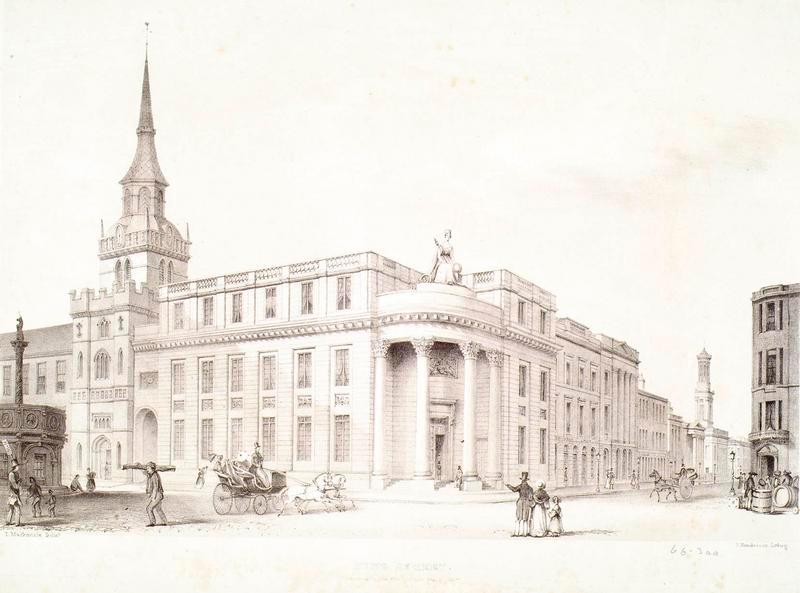

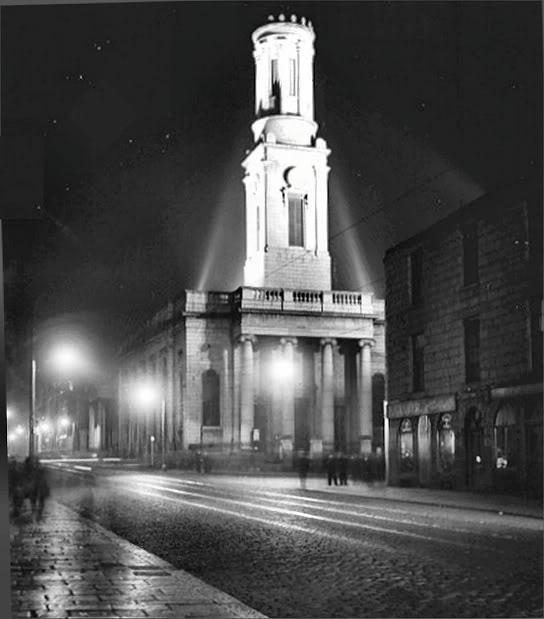

The North Church, Built in 1829 at a cost of £10,500, is a Grecian Edifice, modelled apparently after St Pancras in Euston Road, London NW1, measures 120 x 64-ft, and has an imposing Ionic Portico, 32-ft high, and a Circular Tower of 150ft. Church completed in 1830 by John Smith in the Neo-Greek style with a rectangular giant order, 4-column Ionic Portico and a Square Tower with the round Tower of Winds at the top Stage.
The Bays are set off by Pilasters, the segmented windows within being set further back. The Exterior is protected against change but internally any resemblance to the original has disappeared although some of Smith’s Interior (the Vestibule & Stairs) survives. Now the Aberdeen Arts Centre and is regarded as the finest work of local City Architect John Smith (1781 – 1852). Built 1829-30, the Building reflects Smith’s great attention to detail. Internally little of Smith’s Interiors remain following the conversion to the Arts Centre in the 1950s. The Centre comprises a 350-seat Theatre & Meetings Rooms, used for Performances, Talks, Conferences & Club Meetings, together with Display space for both Local Artists & Touring Exhibitions.
Aberdeen’s 1st Lady of the Theatre: Annie Inglis MBE dedicated her life to Drama in Aberdeen, Founding Aberdeen Arts Centre & Inspiring Generations to take to the Stage. Born Annie Nicol in 1922, Annie Studied English at Glasgow University before taking up a Career in Teaching. She joined the Monklands Rep in the 1940s, perfecting her Directing Skills which she would use to great effect in Aberdeen where she Founded the Attic Theatre Group, an Amateur Group, which enjoyed an enviable Reputation for Performance. Over the years Annie Founded Aberdeen’s Arts Carnival, Texaco Theatre School & Giz Giz Theatre Project for Youth. When the Arts Centre was threatened by Closure in 1998 Annie ran a hugely successful Campaign to save it involving many famous Theatre Actors who had Trod the Boards there.
William Leslie (1802-79) was born in New Deer and was Apprenticed as a Stonemason. His Family were Independents, i.e. Congregationalists. He Established himself at Park Cottage, Broadford, Aberdeen by at least 1828 when he designed a Castellated Lodge & Gate for Hatton Castle. As a Contractor, his 1st Job is said to have been the additions at Craibstone House, presumably those Built in 1829, but it is not clear whether he designed them. He certainly Built the North Church in Aberdeen to Architect John Smith’s Designs in 1829-30 & Castle Newe to Simpson‘s Designs in 1831. In 1836 he was appointed Agent for the Duke of Sutherland Estates, undertaking Architectural & Civil Engineering Work and for whom he began the Building of Dunrobin Castle. Joining Alexander MacDonald in 1839, he collaborated with him on the Design for the Statue of George, 5th Duke of Gordon (1842-48) in Partnership as McDonald & Leslie, based in Dornoch. His Sutherland Appointment did not exclude Contracting for others and in 1840-41 McDonald & Leslie widened the Bridge of Dee to the Designs of James Walker of Walker & Burgess, London, using the original Facings as far as practicable, a Contract which marked the beginning of a shift of his Business Interests towards Aberdeen.
1789 Survey Map – Alexander Milne
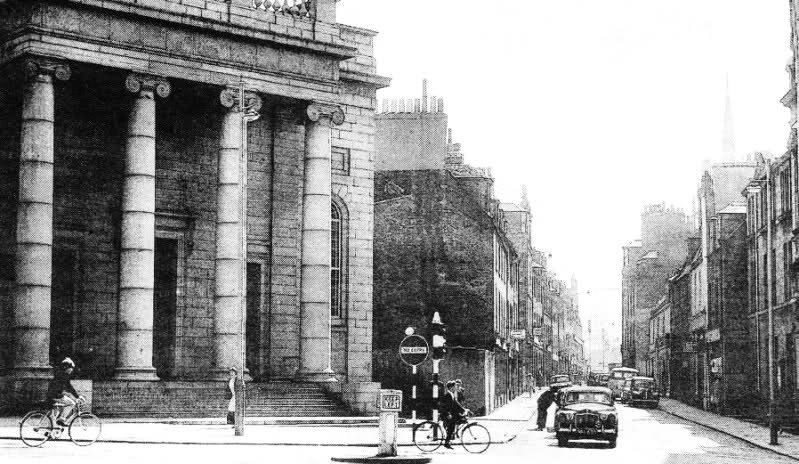
The North Church opposite Calder’s Sports Shop and on the Junction with Queen Street was planned by Architect John Smith, Esq is an elegant Building, and forms a very conspicuous Ornament in King Street.
The Rifle & Artillery Volunteers had Drill-Halls in both Blackfriars Street & Queen Street.
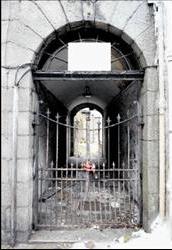
The Listed part of the late Boilermakers Club Building was Designed by Architect John Smith, who was responsible for such gems as the North Church on King Street and the Screen of St Nicholas Churchyard along Union Street.
Inset – Pend Gated Entrance. The Doric Portico & Entrance beyond the Pend to 146-148 King Street during its time as the Aberdeen Eye Institution. Previously known as the Aberdeen Ophthalmic Institution, this Specialist Eye Hospital was Founded in 1835 by Sir James McGrigor & Dr John Cadenhead. It was originally located on the South end of Belmont Street and moved to 142 King Street in 1903.
The Editor as a 5-yr old attended this Premise in c.1946 to have a large and very painful Stye Lanced and my apprehensive Vocal utterances at the barbaric solution – an approaching sharp Needle threatening my Eyeball. My guttural protests reminded the equally protesting Opthalmic Surgeon of a Pheasant’s cry – or did he mean ‘Peasant’ as I had never seen such exotic Ornithology in my early life in the City Environs?
It was Built by the Architect John Smith as his Family Home & Office in around 1817.
Dr William Clark Souter (1880 -1959) was Ophthalmic Surgeon to the Aberdeen Royal Infirmary, Aberdeen Eye Institution, Aberdeen Maternity Hospital & Lecturer in Ophthalmology at the University of Aberdeen from c.1920 until his Retirement in 1946. A long-serving Member & President of the British Medical Association and of Aberdeen Medico-Chirurgical Society, he received the Polar Medal for his Service as Ship’s Surgeon on the ‘Terra Nova‘ relief Expedition to the Antarctic, 1903/4. The Expansion of King Street and nearby Streets surrounded the John Smith Villa with access from King Street was through a small Pend. After the Aberdeen Eye Institution vacated the Building it was occupied by the Boilermakers Social Club until the early 2000s. Above the Portico then was the Latin Inscription Humani Nihil Alienum borrowed from Terence a Roman Playwriter – (“Nothing Human is Alien to me”) its use probably attributable to John Smith as the Architect of the Villa
Left – “Marischal College (prior to Mitchell Tower addition) from the roof of 75-King Street”. A little way up from the corner West North Street and probably from Rear Attic Dormer window overlooking Farriers Lane, Chronical Lane, Meal Market Lane & West North Street. It is signed “J Small, 93” (1893) Taylor & Henderson (J) Lithographers. Right – from North-east by Keith & Gibb Lithographers, Note the washing pole Rig on the mid-left window and possibly Little John Street.
Barry Henry & Cook Engineers were located in West North Street Engineering Works. Founded c.1790. A large Group of Old 1 & 2-Storey Buildings, somewhat now much altered, mostly rubble-built, including the Barry Hendry Iron Foundry. It may be their Chimney Stack seen beyond the Rooflight in the J Small Artwork.
Crown Cycle Co (B & C Walker), 250 King Street, c.1906
John MacDonald Henderson Jr (d.1924), was the son of John MacDonald Henderson, Founder of the Aberdeen Engineering Firm known as John M Henderson & Co. Ltd, Kings Works, 207 King Street, Aberdeen. John M Henderson Sr, was the nephew of John Henderson, Lithographer & Engraver. According to a note, J Alan MacDonald Henderson’s father’s Great Aunt Ellen Campbell-Brown lived at Quarry Lodge, Cairncry and was married to Professor James Campbell-Brown, DSC, LLD, at one-time Professor of Chemistry at the University of Liverpool. His mother, Margaret Sinclair Taggart, was the eldest daughter of Sir James Taggart, Granite Merchant, Great Western Road, Lord Provost of Aberdeen, Lord Lieutenant & Admiral of the North Sea during and after WW1.
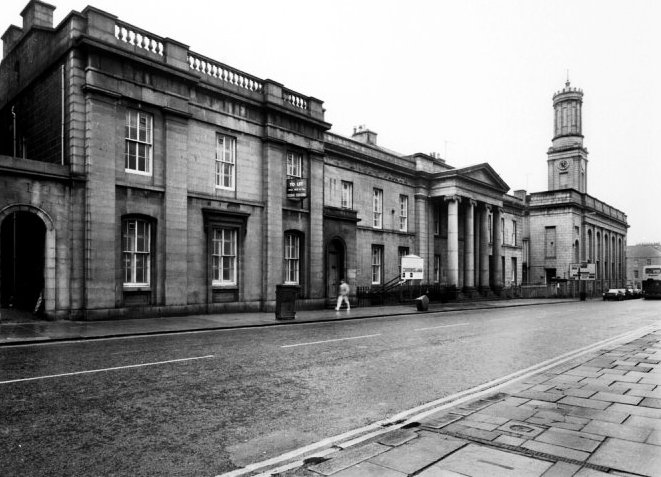
Archway to Lodge Walk, Records Office, Medico Building & North Church
The Land between Lodge Walk & King Street became the Poultry Market. Hence the reason why Egg Sellers in the Castlegate, had their Stance at the South end of King Street. Where it abutted to the Castlegate. My Great Grannie from Dyce, came there, in all weathers, to sell her Employer’s eggs in this area, around 1860. She was a skivvie on the Farm since being orphaned at the age of 6, and never went to School. Very Religious. Her mother’s Family came from Rothes. I think her Dad was a Traveller. – Fraser H
A well-spoken Gentleman in the early 1900′ took Lodgings in Lodge Walk, near the Courts, Jail & the Police HQ. He was a twin to Edward VII and also dressed like him. Local Gossip had it that he was an illegitimate Royal, Pensioned off to keep him quiet, with added Security from the adjacent Police Station. He had the same beard & physical appearance as Queen Victoria’s son. Fraser H
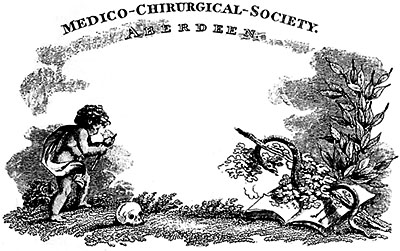
The Aberdeen Medico-Chirurgical Society was Founded in 1789 in response to the lack of Medical Teaching offered by both King’s & Marischal Colleges. Its Members, including such Figures as Sir Alexander Ogston, Professor Matthew Hay, Sir Ashley Mackintosh & Sir James McGrigor, contributed to the Development of Medical Teaching & Practice in Aberdeen & Beyond in profound ways. On the 14th December 1789, the Aberdeen Medical Society was founded by a Group of Medical Students, of which James McGrigor & James Robertson were the Leaders. There had existed previously in Aberdeen 2-Medical Student Societies, one in 1768 & the other in 1786 but both had withered & died, a fate which did not befall the 1789 Foundation. Over the years this Society gradually Established itself & was strengthened by the addition of Medical Practitioners & Honorary Members. The name of the Society was changed to “The…” in 1811. From the earliest days, it had been the desire of Members that the Society should have its own Meeting Place. A Subscription List was Opened in 1812 with the object of acquiring sufficient money to enable the Society to Build a Medical Hall. (Chirurgical is Archaic for Surgical)
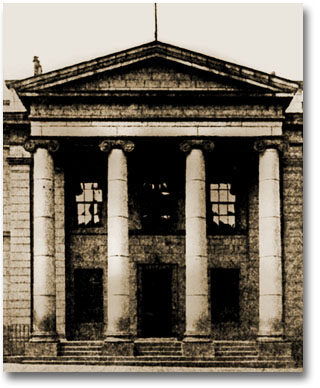
The Medico Building at 29–King Street next to the New Records Office was completed in 1820 to the Plans of Archibald Simpson, the distinguished Aberdeen Architect at a cost of more than £3,000. The Library of the Society Instituted in 1791 grew rapidly & contained many Rare & Valuable Books. With 30-Members, its Hall is entered by an Ionic Portico & contained a large Meeting-room, Laboratory & Library of 4000-Volumes, with Portraits by Vandyke & T Miles, etc. In 1967 the major portion of the Library’s old & rare Medical Books was Sold & later the Hall in King Street was Sold. The proceeds enabled the Society to build its New Hall on the Foresterhill Site, to which the Society moved in 1973.
A woman of Culture associated with the Medico Building at 31- King Street was Isabella Fyvie Mayo a prolific Poet & Novelist who wrote under the Pen Name Edward Garret. Although she was to spend most of her life living in Aberdeen, Isabella was born in London in 1843. She was also a Pioneering Translator for Tolstoy & became not only his friend but was also friends with Mahatma Gandhi and her home was said to be “an Asylum for Asian Indians. She became an Ethical Anarchist, Pacifist, anti-Imperialist, anti-Racist & Suffragette Campaigner. In 1894 she was elected a Member of the Aberdeen School Board, the 1st-Woman Elected to any Public Board in Aberdeen & it is in this Medico Building that the Aberdeen School Board convened. Fyvie Mayo was only 16 when she began writing to pay off a Family Debt. It enabled Fyvie Mayo to make her books helpful to others & especially to those who were harassed by doubt. At the age of 18, Fyvie Mayo made the acquaintance of Irish Novelist Anna Maria Hall whose encouragement & practical help were of great use to her.[
The Activities & Operation of the Aberdeen Children’s Theatre which was the 1st Civic Children’s Theatre to be opened in Britain at 31 King Street, the old Medico Building. The Theatre was operated by the Department of Speech Therapy. Born in Brechin & known by Local Folk as the ‘speakin’wifie’ Catherine Hollingworth: 1904-99, Speech Therapist & Child Drama Pioneer. Educated at the Royal Academy of Music she started her Teaching Career in 1927 & might have remained a Drama Teacher but for the Road Traffic Accident in 1933 which led her to use her learning to address the Injury to her own Speech. This Ignited a lifelong interest in Speech Therapy at a time when there were very few speech therapists. While another pioneer of the Profession Lional Logue (as dramatised in the Film The King’s Speech) was supporting King George VI in London, she became Aberdeen’s 1st Superintendent of Speech & Drama and Speech Therapy in Aberdeen in 1941. In 1942 she created the Aberdeen Children’s Theatre which attracted International recognition for its pioneering work in the field of Child Drama. She had the theory that if you allowed children to play only to Children, with no Adults in the Audience, their creativity & imagination would be much greater.
As Doric spikkin bairns at School in the early-40’s Catherine (who died in 1999) visited all the Aberdeen Primary Schools in order to teach us the rudiments of Enunciating the King’s English & Omitting our Doric Glottal-stops. These Sessions were hilarious & entertaining on P’s & Q’s and Tongue Twisters but hardly very Practical as we instantly lapsed fluently into the broad ‘Mither Tongue’ Doric Dialect on leaving the Classrooms. Children’s Theatre Film 1959
Over the years the Society has played an important & influential role in the Medical life of Aberdeen. It gave advice to the Citizens through the Town Council on combating Cholera & Typhus; it instituted the Training & Certification of Midwives in the City in 1827; it urged in 1867 the necessity of providing a Fever Hospital; it Commented on Medical Education on many occasions. In 1920 the Society held a special Meeting to discuss the question of Hospital Accommodation for Aberdeen & District. At this meeting, Professor Matthew Hay outlined his Scheme for coordinating the Aberdeen Hospitals & Clinical University Departments on a Common Site. This resulted in the Modern Hospital & Medical School Complex at Foresterhill.
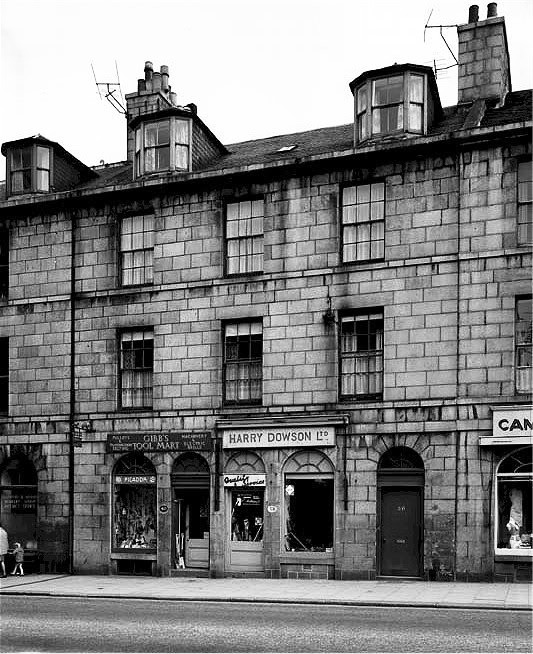
A Street of Monumental Mason’s (Not a Pun!)
William Edwards & Son (Granite Merchants) Ltd, whose Premises consisted of 2-Yards, No.s 3 & 4 Pittodrie Street. In August 1971 it acquired the Share Capital of Robert Crofts & Sons Ltd whose Yard in Pittodrie Street was adjacent to the former Edward‘s Yard on the South side of the Street. It was to this area on the East side of King Street, bounded by Merkland Road East to the South & occupied mainly by Granite Firms since the 19thC.
1933 – Gibb Tools (above) was Established. Originally situated on Lodge Walk, Aberdeen with only 2-Employees. 1948 – Relocation to 40 King Street – Gibbs Tool Mart. Around 5-full-time Employees. By 1970 they were already Established as a Reliable Specialist Tool Supplier for the booming Oil Industry.
Harry Dowson Ltd Quality Services – well remembered, but for what ~ Domestic Utilities of the day? Harry Dowson, the Tailors had 2-Shops on George Street & one on Holburn Street.
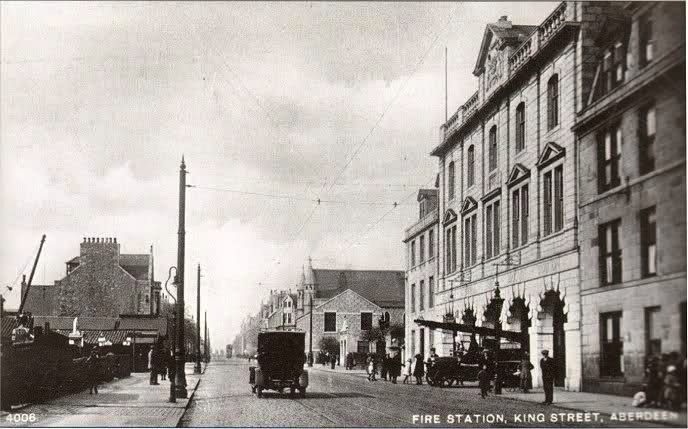
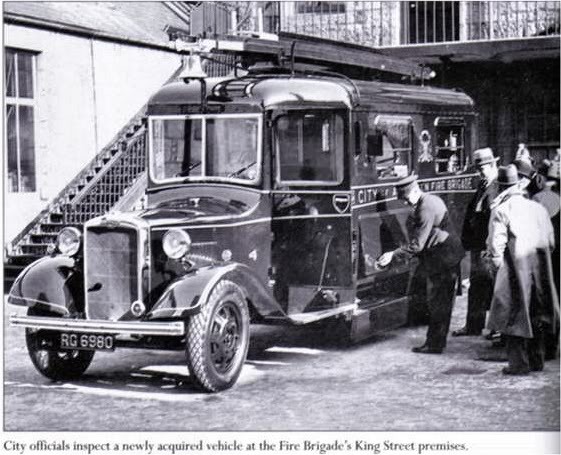
The Fire Station in Kings Street was Constructed during the Tenure of Lord Provost Daniel Mearns & cost £6,500. The Building dates from 1899. The 23–Firefighters of the Period had Horse-drawn Tenders, which did not completely disappear until the 1920‘s. Aberdeen recently made national headlines with their decision to paint Fire Service Vehicles – White. This colour is cheaper than traditional Red Paint. Grampian Fire Brigade now employs over 800-Staff tackling over 8,000 Emergencies a year. An early RG Registration Fire Engine in King Street looking more like a Hearse.
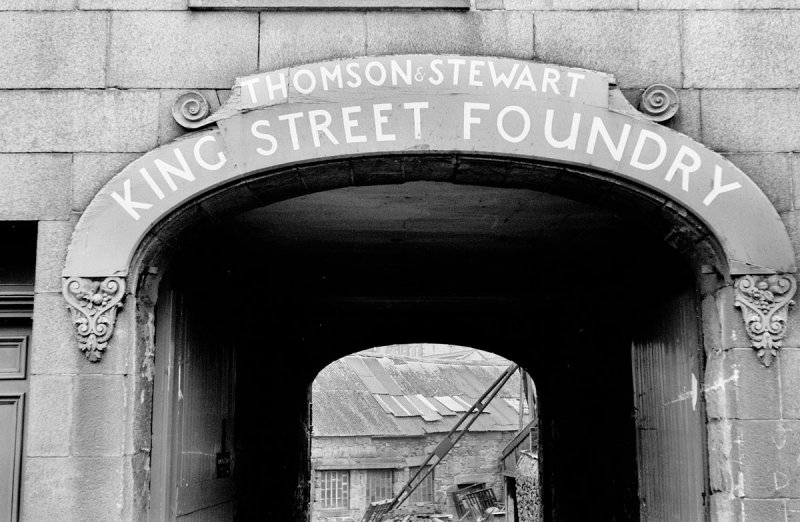
305 King Street, Thompson & Stewart – Iron Foundry under Demolition
A Brewery with Malt Barns etc attached, situated between the GNS Railway & Nelson Lane on the Westside of King Street near the Don Bridge; this Brewery had acquired a great celebrity for the excellence of its Ale & was the Property of James & Co, King Street.
Militia Barracks, 389–King Street & once Home to the Gordon Highlanders. A large plain Building Erected in 1861 at an expense of £9.900, Designed by William Ramage, Architect; it was occupied once exclusively by the Staff of the County Regiment of the Militia – The Royal Aberdeenshire Highlanders, 30 in number. – The Regiment assembled here for its Annual Training, generally in the month of June. The time of embodiment is fixed for 27-days, there is 7-days Preliminary Drill for Recruits.
2-Storey Block, Crowstepped Baronial, symmetrical rubble-built & featuring Angle Turrets with Central Pend Arch. There are detailed Memories of the King Street Barracks being used for Housing Families immediately after WWl as there was then a severe Housing Shortage for returning Soldiers. The Spartan Militia Barracks would also prove to be equally Spartan Accommodation for the ex-Soldiers Families. Damp Walls, Outside Water Supplies, the remote Latrines numbered 4 for some 16-Families & with Communal Washing Facilities. Quite Typical of so many existing 19thC Tenements still being Occupied as Late as the 1950‘s including Castlehill Barracks & the remote Torry Battery at Balnagask. The sought-after Officers Quarters were above the Entrance Pend on the Upper Floor & some Non Commissioned Officers to Right on Love Lane. The large Drill Court was adapted for Drying Greens & a Playground for the many Families. The North End was then Employed as the Tram Depot & Administration Offices. The long Upper Lofts also provided space for Drying Clothes in inclement weather. Gaslighting & Cooking were available on Ancient Lighting Brackets & single Cast-iron Gas Rings. Crystal Radio Sets were a luxury but for one-listener only at a time. The children would Play in the Tram Depot much to the annoyance of Fatty Clarke the ‘Watchie‘ who was also a fellow Barrack Tenant. Much fun could be had playing in an open-ended Static Tram – both Upstairs & Doonstairs and 2- entries allowed an Escape Route.

The 4-sided Quadrangle & Buildings that were part of a Militia Barracks dating to 1861. Represented by a Tram Shed & the Conversion of the Phase-1 Buildings in 1918 when the Site changed to a Tram Depot. During the 1950′s the Complex was Converted to a Bus Depot & extended by the Building of Workshops & Garages.

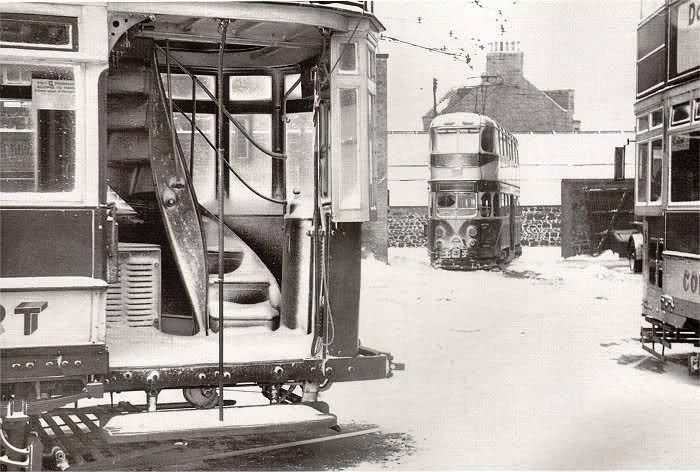
King St Corporation Bus Depot – Early Beginnings: The King Street Militia Barracks were erected in 1861 at a cost of £10K in the old Scottish Castellated Style. The Building was completed & 1st Occupied by the Royal Aberdeenshire Highlanders in 1862. These Quarters, which were for Permanent Staff, consisted of a Block of Stores, Guard Room & Offices, which surrounded an ample Parade Ground. In poor weather, the men were provided with adequate Shelter within the Staff Quarter’s Basement. Before long the Accommodation was enhanced by converting the ranges of Open Shelters into Barrack Rooms & then a considerable number of men were Quartered in the Barracks. The Permanent Staff had, however, not long occupied the New Quarters when they had to move to other Accommodation due to infectious diseases of Cholera & Typhoid which prevailed in Aberdeen in 1864 and it was deemed unsafe to keep the Regiment there. This led to the Training of the Regiment being conducted at Fort George. In 1880, the Accommodation became insufficient therefore additional Barrack Rooms were Built to house an extra 300 men. In 1882, the Royal Aberdeenshire Highlanders became the 3rd Battalion of the Gordon Highlanders. At this time the Staff based at the Barracks consisted of Officers, Warrant Officers & Permanent Staff Sergeants. All other Ranks lived at home in the local area & Reported to the Depot when Drills & Training were required. No recorded History of the Barracks can be found after 1882 until Aberdeen Corporation Tramways bought the Property in 1914.
But not all Gordon Highlanders moved out:
In 1915 Captain Beaton, an Army Officer during WW1 (1914-18) returned from the Trenches in France after sustaining head injuries. After treatment & recuperation, he was later transferred to King Street Barracks. In March 1918 he received his Orders Posting him back to France, but Captain Beaton had endured enough. The following morning his Body was found Hanging in the Southeast Turret of the Building, which was at the time used at the Officers Mess. The Captain has since been known to Haunt the Building & has been spotted in full Regimental Dress by Members of Staff on several occasions with the latest Sighting in October 1988.
Aberdeen Corporation Tramways Purchases the Barracks in King Street with the intention of providing a Central Depot & Repair Shop to replace the existing one at Dee Village Road (Electricity Works), which was becoming too small to cope with the Work of the expanding Transport Department. However, with the Outbreak of WW1 in August 1914, the Barracks was again taken over by the Military Authorities, which put Building Schemes on Hold until it was vacated in November 1918 at the end of the War. The Transport Department then set about reconstructing the Premises & Built Accommodation for a number of Tramcars once the Military Authorities vacated the Building.
1925 to Date – In 1925, a rapid extension of Bus Services took place, which required an increase in the Fleet of Buses & extra Garage Space. This was achieved by purchasing Premises at Canal Road, capable of holding 70-Buses. During 1932, a big Extension was carried out at King Street Workshops, enabling the Overhauling of both Trams & Buses to be Centralised. In 1958, a further Extension was carried out at King Street to provide Facilities for Garaging, Servicing & Repair of the Fleet, which with the withdrawal of the Trams, consisted of 230-Buses. The Centralisation of Work allowed the Department to close the Tram Depots at Queens Cross, Woodside, Mannofield, Canal Road, the Beach & South Market Street
Grampian Regional Transport remained a Department of the Council until 1986 when the Transport Act necessitated the Formation of a Private Company, Grampian Regional Transport Ltd, which was Initially owned by the Council but Operated at Arm’s Length. In 1989, the Employees of the Transport Company made a successful bid to buy the Company from the Council & on the 20th January 1989, the Company was substantially owned by its Employees under ESOP (Employee Share Ownership Plan). Later the Parent Company, GRT Bus Group Plc, after making several Acquisitions, was the subject of a Stock Market Flotation and was soon to merge with Badgerline to form First Bus, which changed its name in 1998 to First Group Plc after acquiring Interests in Airport & Rail Operations.
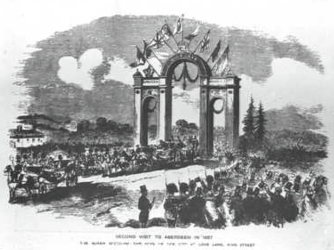
This Illustration shows Queen Victoria receiving the Keys of the City of Aberdeen in October 1857 as she Travelled to the Railway Station after a summer spent at Balmoral. The Queen & The Prince Consort had Travelled by Coach the 60-miles from Balmoral to visit the Earl of Aberdeen at Haddo House on Wednesday 14th October. Their Route was decorated with Flags & Arches at various points. A Dinner, with a number of Guests, including Lord Provost Webster of Aberdeen, was Held at Haddo that Evening & huge Bonfires on surrounding Hills lit the Scene. On Thursday 15th October, the Queen & Prince Consort left Haddo, accompanied by the Earl & his son. More decorative Arches had been Erected on the Roads South of Aberdeen. Lord Provost, Magistrates & Councillors met the Queen at this Royal Arch near the City Boundary at Love Lane (now Nelson Street) by the Militia Barracks on King Street. The Arch had been Designed by the City Architect, William Smith. It was 15-ft wide, 26-ft high, with 2 smaller side Arches. It was surmounted by the Royal Arms, Flags & Banners, with the words, “God Save the Queen” & “Victoria“, on either side in Gilt Letters. The side Arches had the City motto, “Bon Accord“, with Floral Crowns above, with flowers, evergreens & heather decorations. Many of the Guard of Honour wore the Crimean Medal. The Lord Provost presented the Silver Keys on a Velvet Cushion to the Queen, who touched them, returned them to the Provost & said, “It affords me great Gratification to be once more in my City of Aberdeen“. The Dignitaries returned to their Coaches & the Procession Travelled on to Guild Street Railway Station, where, after a Luncheon, the Royal Party now joined by the Royal Children, who had come directly from Balmoral, Boarded the Train for Windsor.
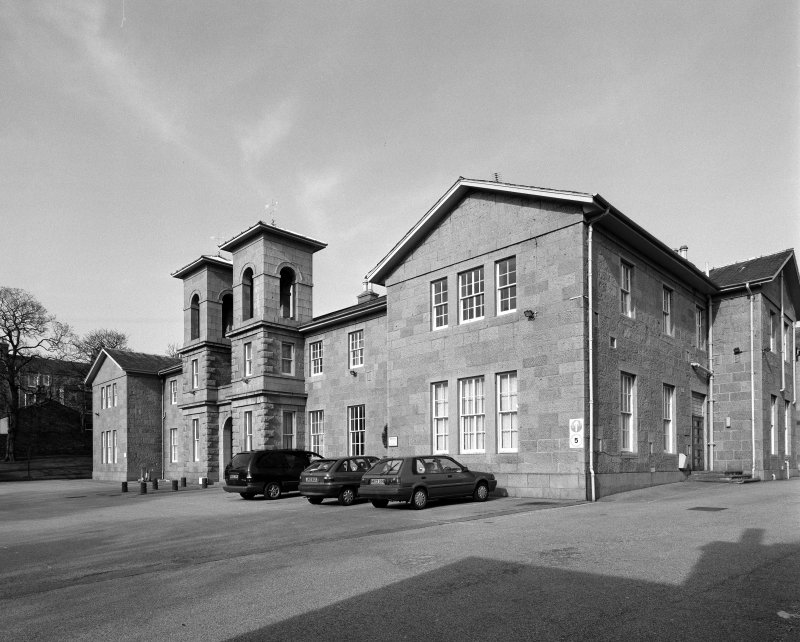
352-354 King Street, Boys’ & Girls’ Hospital 1869. Designed by William Smith, son of John Smith, contemporary of Simpson. Extended by Dr Kelly in 1890.
The Educational Trust, formed to Administer these Charities, had the Power to Grant Bursaries, provide Free School Books, conduct the Boy’s & Girls’ Hospital School (where 305-children were provided with 3-free meals on 5-days each week & the neediest of these were provided with Clothes & Boots or Shoes) & conduct a Girls’ Home & School of Domestic Economy at 352 King Street. The Trust was also to Administer the Endowments set out in James Man’s Mortification. The Will of James Man, Philologist dated 20th October 1761.
James Man, Philologist, born about 1700 (d.1761) at White Wreath, in the Parish of Elgin, Morayshire, was Educated 1st at the Parish School of Longbride & afterwards at King’s College, Aberdeen, where he Graduated MA in 1721. He was then appointed Schoolmaster of Tough, Aberdeenshire & in 1742 Master of the Poor’s Hospital in Aberdeen. He proved a very useful Superintendent of the Hospital, to which at his death in 1761 he left more than half the little Property he had Accumulated. Man’s zeal for the Character of George Buchanan led him to join the Party of Scottish Scholars who were dissatisfied with Thomas Ruddiman’s Edition of Buchanan’s Works Published in 1715. James Man exposed the errors & defects of Ruddiman’s Edition in ‘A Censure & Examination of Mr Thomas Ruddiman’s Philological Notes on the Works of the Great Buchanan – more particularly on the History of Scotland – containing many particulars of his Life,’ Aberdeen, 1753. This Treatise, which extends to 574-Pages, is learned & acute, but very abusive. Ruddiman replied in his ‘Anti-crisis,’ 1754 & in ‘Audi Alteram Partem,’ (let the other side be heard as well) 1756 [see Thomas Ruddiman]. James Man made Collections for an Edition of Arthur Johnston’s Poems, which were in the Possession of Professor Thomas Gordon of Aberdeen (Humanity -Kings College) & was encouraged by many Presbyterian Ministers to undertake a History of the Church of Scotland. He only completed an Edition of Buchanan’s ‘History of Scotland,’ which was Issued at Aberdeen in 1762.
